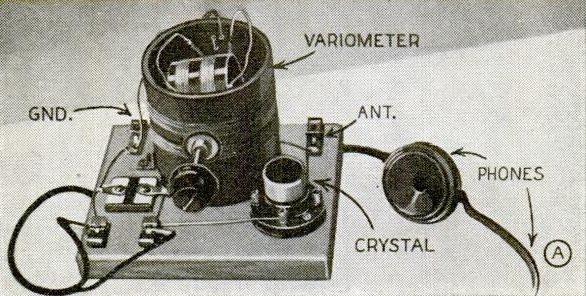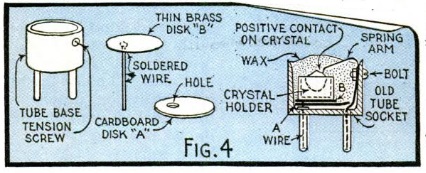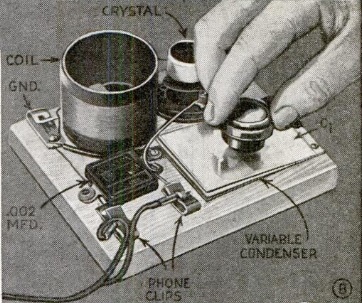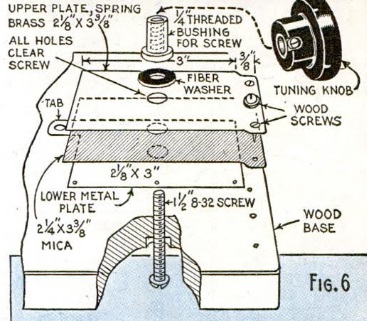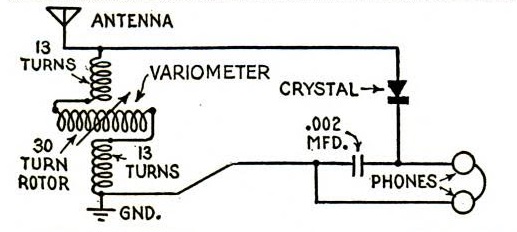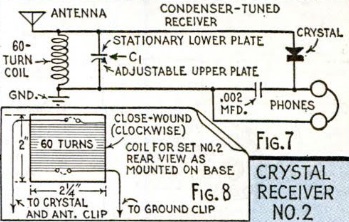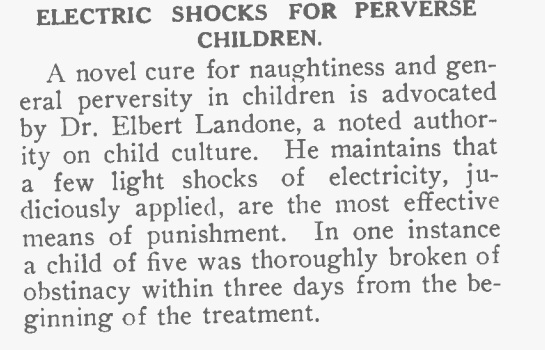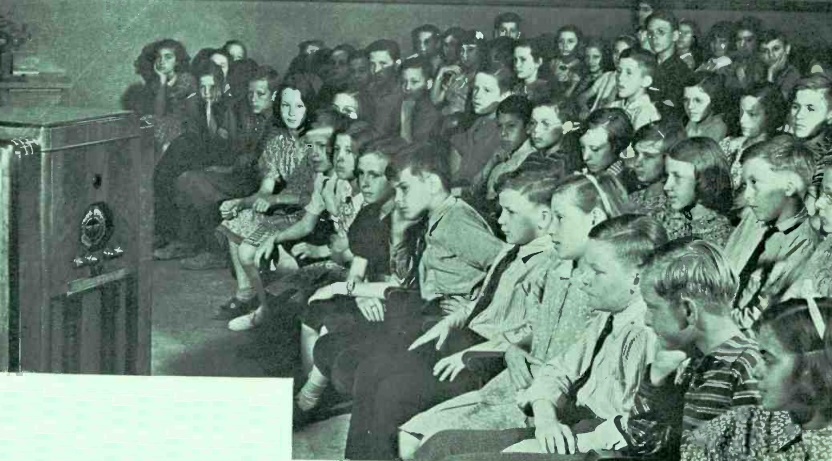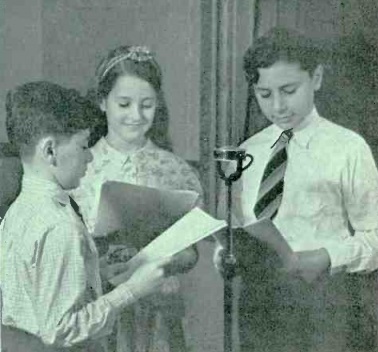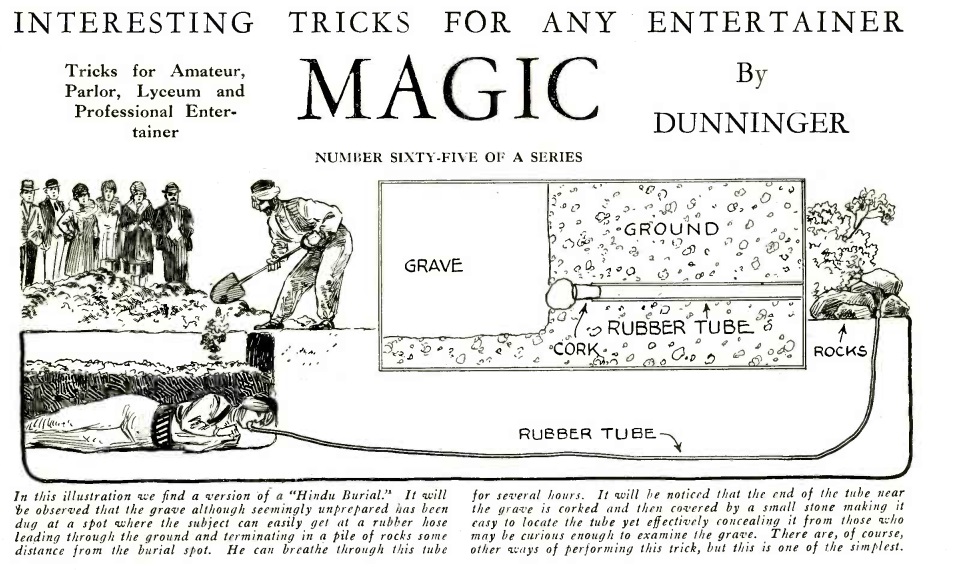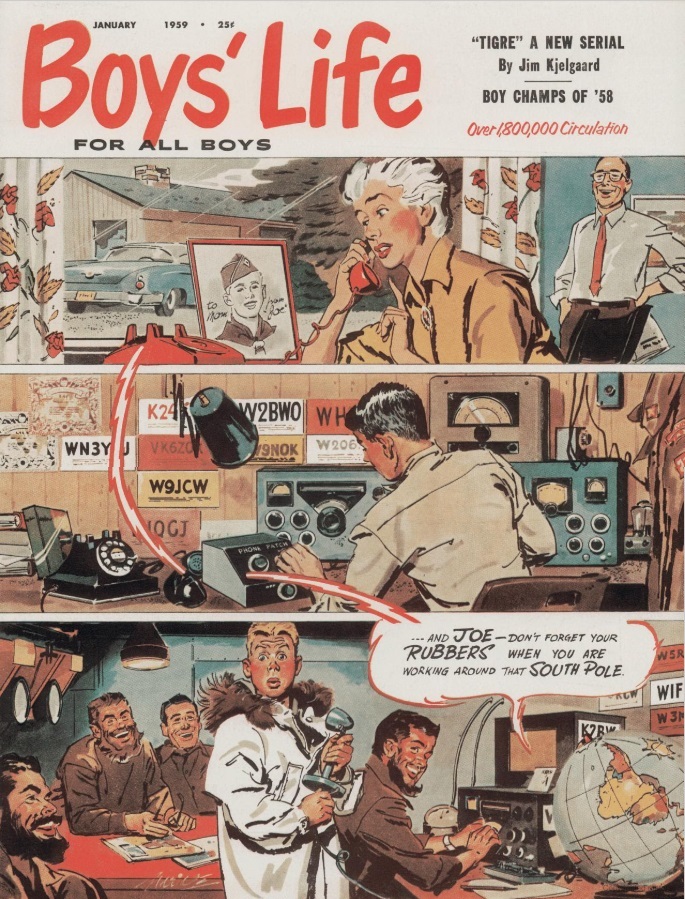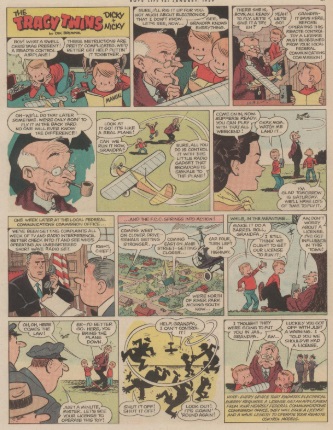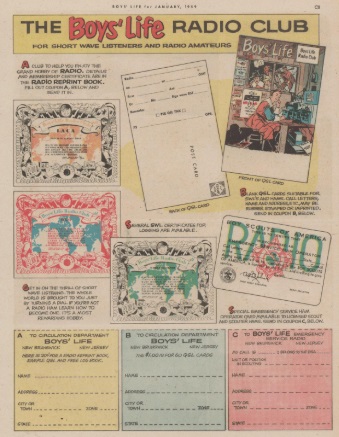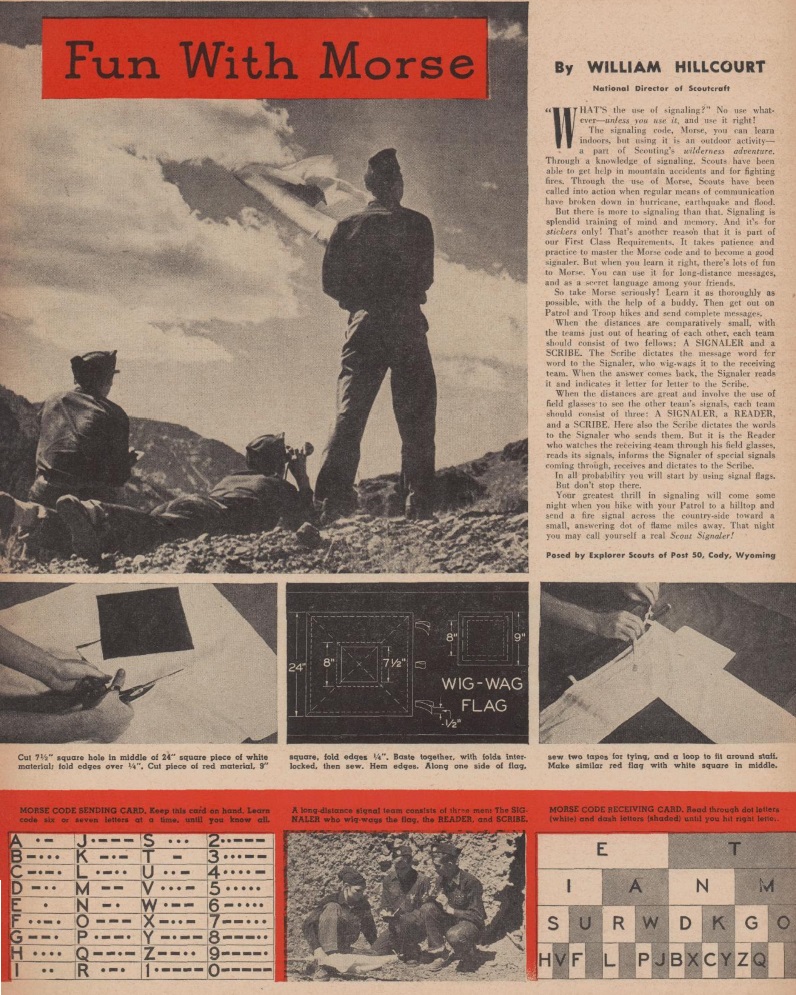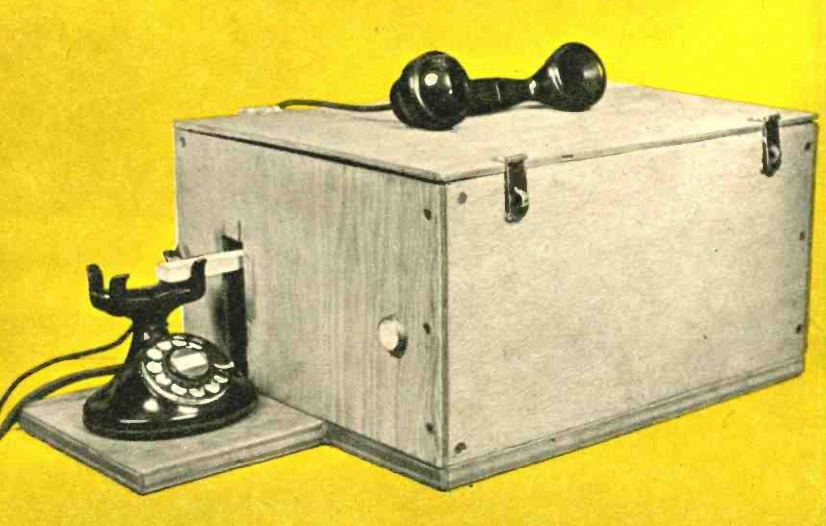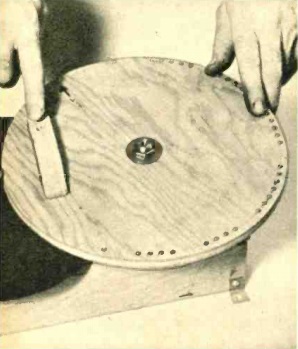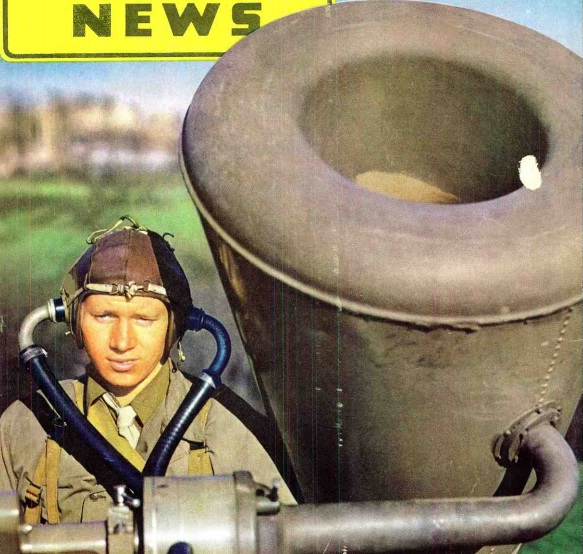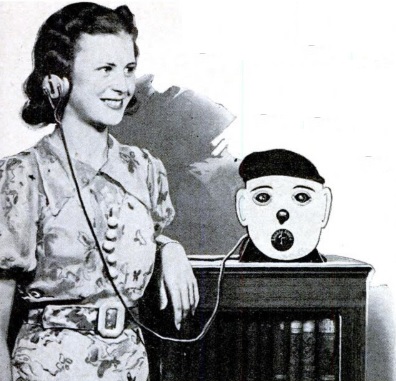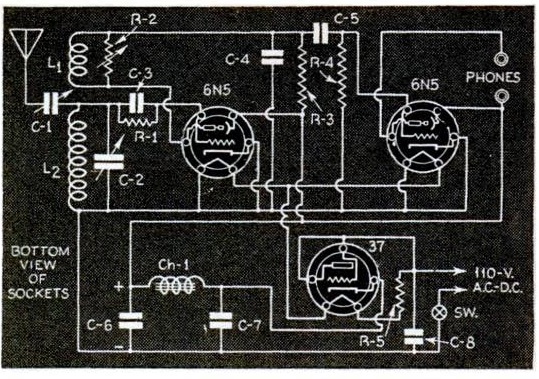Wartime parts shortages were undoubtedly the inspiration for these two crystal sets from the January 1944 issue of Popular Mechanics. While commercial parts could be used, from the junk box, salvaged from an old radio, or from a mail-order house, the article showed how to make most of the parts. The article notes that the newcomer needed only a good set of headphones to build either set from scratch.
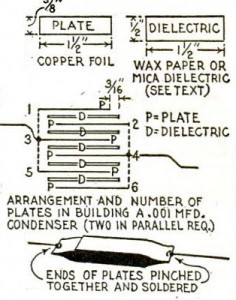 The first set, shown above, omitted a variable capacitor, as it used a variometer for tuning. It did require one fixed capacitor, but the article shows how to make one using copper foil and either mica or wax paper.
The first set, shown above, omitted a variable capacitor, as it used a variometer for tuning. It did require one fixed capacitor, but the article shows how to make one using copper foil and either mica or wax paper.
A commercial fixed crystal can be used, but the article also shows how to make one. The crystal is mounted inside an old tube base and sealed with wax. The use of an old 4-prong tube socket meant that a commercial fixed crystal could be substituted at a later time.
The second set, shown above, featured a variable capacitor for tuning, which was constructed “book” style. The top plate, made of spring brass, was hinged and moved up and down from the lower plate.
The sets were said to have a range of about 25 miles.

